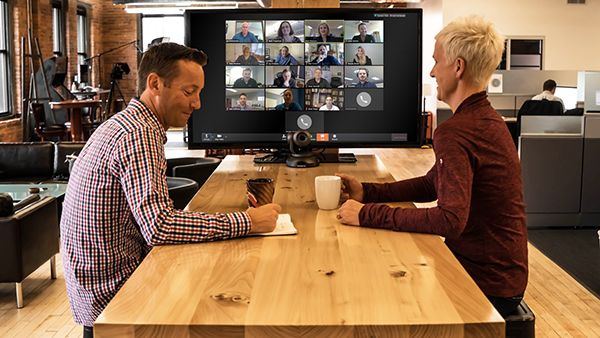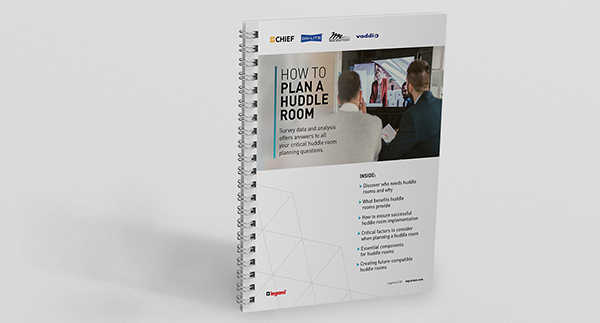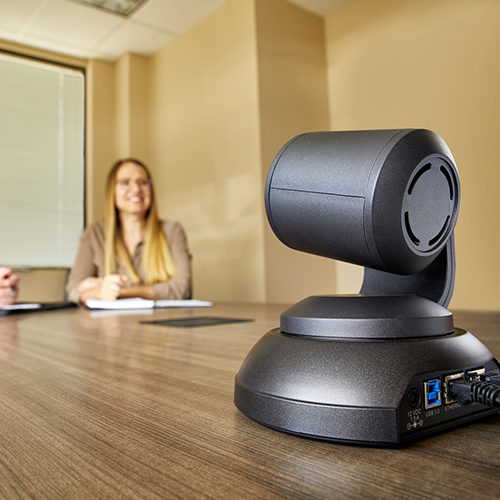Posted on 4/23/2019 by Vaddio Team
Open floor plans increase the need for huddle rooms. Why? Because teams need a quieter, less distracting place to meet. Huddle rooms provide privacy; a defined place to meet; a central display to organize and share ideas and content; and a furniture layout that encourages face-to-face collaboration.
Overcoming the Downside of Open Floor Plans
Open floor plans are becoming more common and it’s easy to see why. They are cheaper, flexible, and foster more collaboration. The problem is they can get too noisy for effective online meetings.
Typically, open floor plans have too much background vocals, or the sound masking system prevents collaboration in a larger group. Huddle rooms can improve online and small group collaboration by providing a dedicated space for communication and the flow of ideas.

Huddle rooms also improve video calling by making video calls easier to manage. They incorporate equipment that suits the space, including a camera that can view more than just one person, compared to a web cam with a limited field of view.
In facilities with open spaces that lack huddle rooms, typically there are one or more large conference rooms. Unfortunately these conference rooms are often too big for the day-to-day needs of the organization, so they’re used as huddle rooms. It’s not uncommon to see two or three people having a meeting in a conference room that could have been held in a huddle room.

What are the essential elements of a huddle room? Find out in our new ebook.
Are Conference Rooms Obsolete?
While large conference rooms are still necessary, an office typically can fit two or three huddle spaces in the physical space of one conference room. Converting large conference rooms to huddle rooms represents enhanced meeting room design and enlightened conference room planning by provide multiple spaces to collaborate at the same time.
Any open space design should consider implementing multiple huddle spaces before building out a second large conference room. Huddle rooms meet the need for private meeting rooms by controlling background noise and visual distractions. They provide collaboration spaces required for brainstorming, empathy interviews, design thinking activities, sharing content, video conferencing, video calling, audio conferencing, and connectivity for multiple devices.
Some people are sensitive to sound masking noise, so a huddle space can be a necessary respite from the masking. Many people report less productivity in open floor plans for various reasons. Huddle rooms can provide private locations for teams to finish projects with few or no interruptions, as well as conduct live video calls.
Learn more about huddle rooms with our new ebook.

 All News
All News